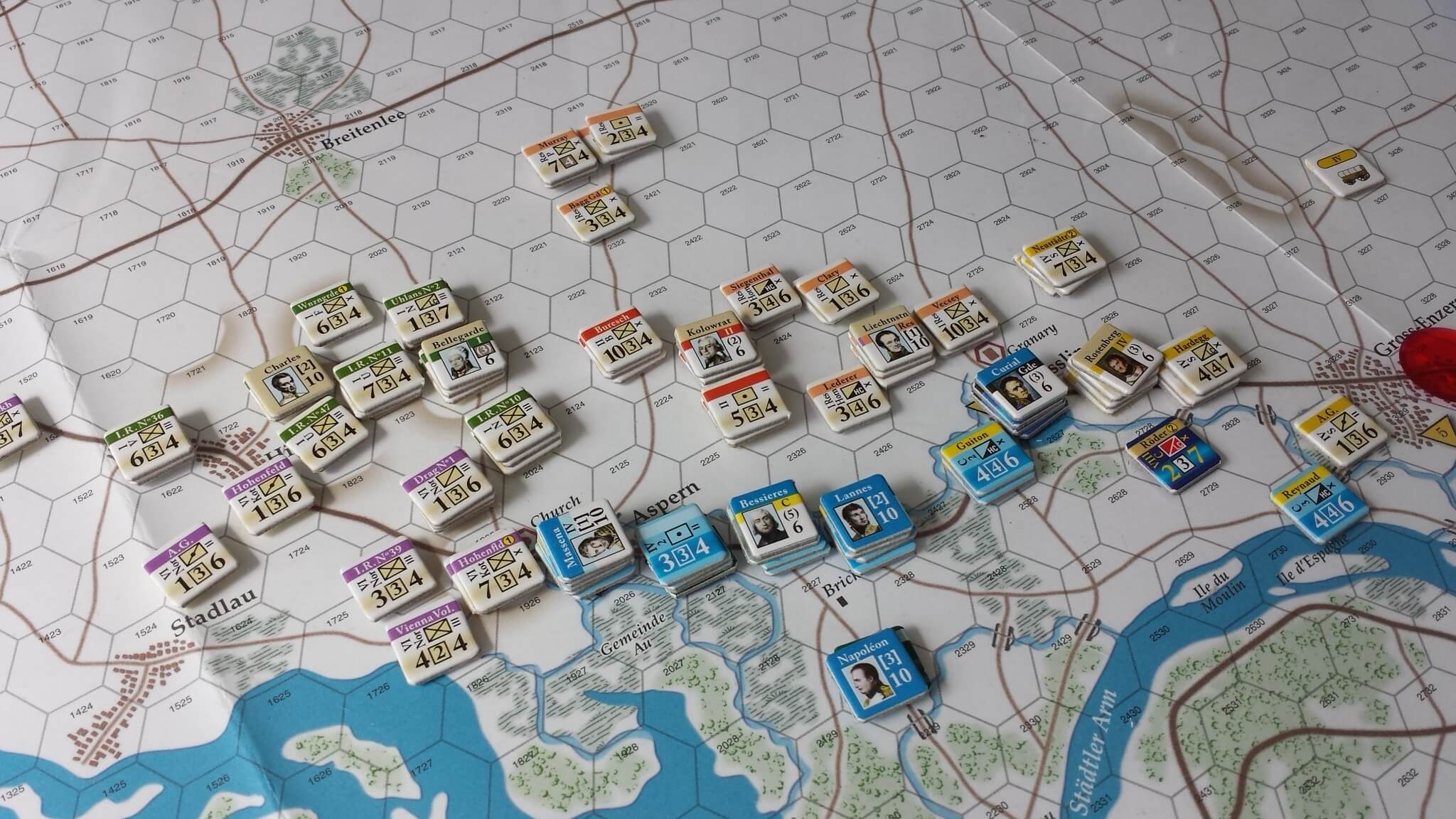Lets look at experiences with combat at 495m a hex and regimental scale in the OSG Napoleonic Library of Battles.
My gut feel is that this core system while clever in its ability to range up and down scales from 500m a hex to several kilometres (the 2x system co-designed with Mark Herman) across several game scales the system itself is mired in 1980’s SPI think. The poor kind.
For me this does a dis service to the vast wealth of knowledge that Zucker has regarding Napoleonic History. I feel like the games and game play are an after thought to the historical events.
Although the 2X does make some changes to game play with logistics and movement tied to card play, the rest of the scales have the same tired, simplistic approach to Napoleonic warfare that we saw in Napoleon at Waterloo or Avalon Hill’s 1962 Waterloo
Am I being ridiculous? No I’m serious, yes there are ‘more rules’, and very nicely developed concepts for command a control, but the heart of the system is the combat system.
It is not delivering a sub 1km a hex experience to me. This combat system and the related Supply, Morale and losses rules fit very well in the 6 hours a turn Days system. It does not fit here in the 500m ish a hex scale that I can see so far.
One hour a turn, and 495m a hex with regiments using Zones of Control and a bloodless CRT have no meaning or relationship to this particular battle where 20,000 French and 40,000 Austrians lost their lives.
When you do lose units or end up out of supply it does not matter! Being OOS or Demoralized just means you cannot advance after combat. Really? Thats it? Fine for larger scale I suppose but not here among the trees and weeds of regimental scale conflict.
Demoralization should impact the forces in a more substantial way.
Barrage and Cavalry charges feel like an after thought, tacked on to ‘add’ tactical flair. They are meaningless. While I am at it, why do I roll low to eliminate a unit in CRT , but must roll high for everything else. This leads to lots of double takes and rules checks.
More on this once I play more of the NLB battle herein.
In the Video I mention that the French forces in the Granary are eliminated. That was correct, but the go in the Recovery box, not the permanent loss section in reduce form if they have it.
If the result had been a normal retreat we could have ignored it. You might know that this granary was large and built with massive 3 foot thick walls. It held of the Austrians all day. Here however it has changed hands twice already in 3 turns. Curious.
Well I am hopeful that I can salvage my thoughts and opinions here on this NLB system. I really like the Days games 1806 and 1809, where the strategy is the key, and the movement of forces the focus. They really shone for me. The NLB tactical efforts are not anywhere near as authentic feeling as my experiences with the Days level of gaming.


Hello,
I played several Aspern Essling scenarios using the Stumptner combat model, and it works MUCH better than the 1960 CRT provided with the game. The big reason the old CRT fails here is that the attacker hardly will suffer losses. You can only lose units three ways in this game: High odds of over 3-1, cutting off the retreat of a unit and forcing it to retreat, a lucky exchange result. In this game, the French won’t see the first two, so really, only by luck can the French extract any casualties upon the Austrians. However, after playing with the Stumptner CRT, which is more a fire table than an odds table, I have found that the flow of combat is MUCH more realistic.
I realize you have a lot going on, but if you return to this game, give the Stumptner rules a go, you will be happy.
Joe
Good insights Joe. Thanks for sharing.